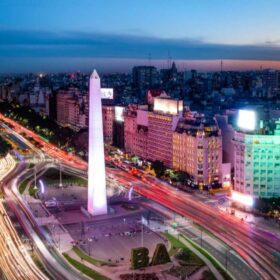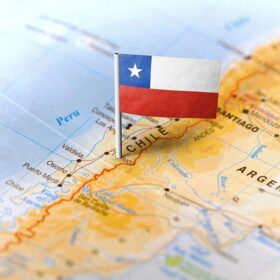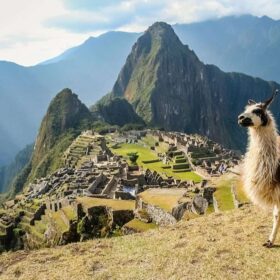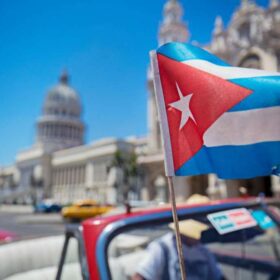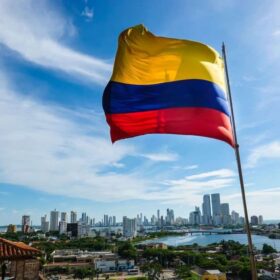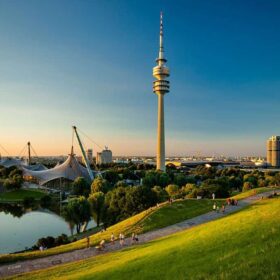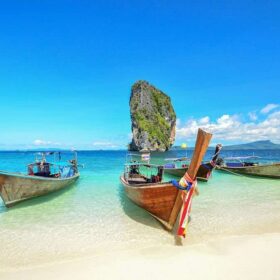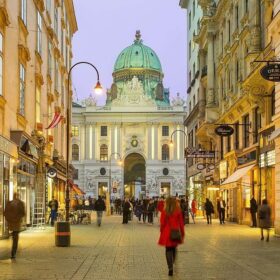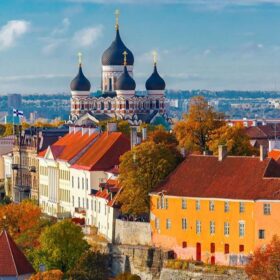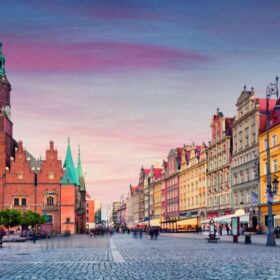Nestled in the heart of South America, Brazil beckons as the fifth-largest country on the planet, offering a vast expanse of adventure and exploration. Travelers are drawn to the picturesque white-sand beaches, exotic tropical islands, vibrant music-filled metropolises, and enchanting colonial towns that adorn its extensive 7,500 km (4,600 miles) coastline.
When exploring inland Brazil, you will encounter magnificent waterfalls, vibrant wetlands teeming with wildlife, and the pristine expanse of the Amazon rainforest. This region is also home to isolated tribes who have had no contact with the outside world.
Travel to Brazil, the magnificent destination in Latin America, where you can explore the rich history of this country. Embark on a journey back in time as you discover how Brazil, once a Portuguese colony in 1500, thrived under Portuguese rule for an impressive span of 300 years. Travelers can still witness the enduring legacy of this heritage in the charming streets of historic colonial cities.
In addition to these popular tourist destinations in Brazil, the country is also renowned for its stunning beaches, known for their excellent surfing conditions, and breathtaking landscapes. The Rio area is renowned for its stunning beaches, offering a perfect destination for travelers seeking sun, sand, and relaxation. Some of these beaches are nestled in remote locations, making the journey to reach them an exciting adventure in its own right. If you are planning a trip to this captivating destination, here are our suggestions for the top tourist attractions in Brazil.
Christ the Redeemer
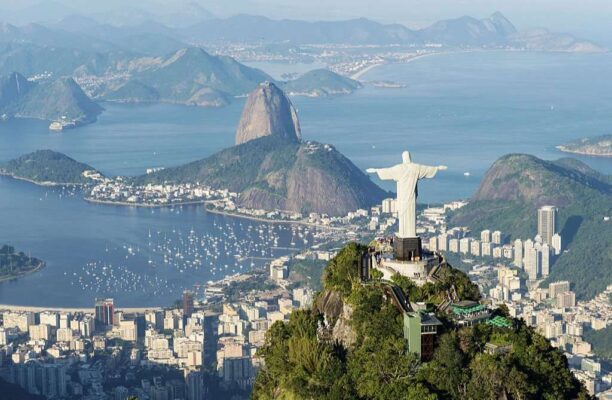
The Christ the Redeemer statue, an iconic landmark that greets visitors to Rio de Janeiro, earned the distinction of being named one of the New Seven Wonders of the World in 2007.
This statue, which stands as one of Brazil’s most visited and renowned tourist attractions, was erected over 90 years ago. It holds the distinction of being the world’s largest Art Deco statue and surprisingly, only ranks as the fourth tallest statue of Jesus Christ globally.
This cultural symbol has transcended boundaries, drawing millions of people, both believers and non-believers, from around the world to witness the Christ the Redeemer statue in person as it stands sentinel atop Corcovado Mountain, overlooking Rio de Janeiro.
Accommodation: Where to Stay in Rio de Janeiro: Best Areas & Hotels
Iguaçu Falls
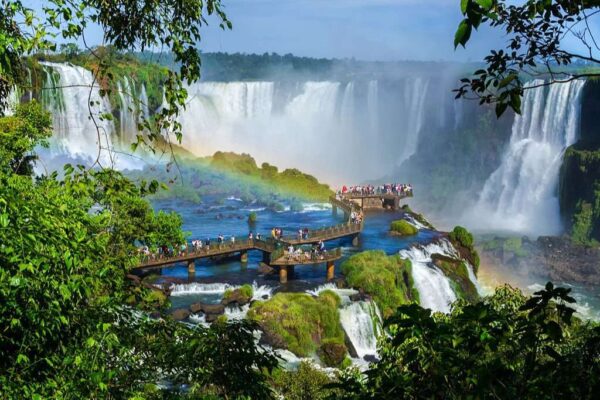
Situated on the border between Brazil and Argentina, Iguaçu Falls is a magnificent natural wonder that captivates travelers from around the globe. The magnificent travel destination known as the Iguazu River is home to a breathtaking system of 275 waterfalls. One of the most awe-inspiring sights to behold is the Devil’s Throat, a magnificent U-shaped formation towering at a staggering height of 82 meters (269 ft).
Travelers can easily access the magnificent falls from the vibrant cities of Foz do Iguaçu in Brazil, Puerto Iguazú in Argentina, and Ciudad del Este in Paraguay. In Brazil, you can explore a scenic walkway that stretches alongside the canyon, offering breathtaking views. This walkway even extends to the lower base of the Devil’s Throat, allowing you to get up close to this magnificent natural wonder.
Copacabana Beach
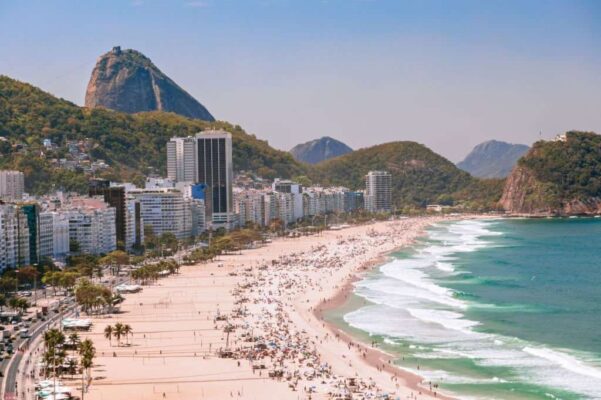
Situated in Rio de Janeiro, Copacabana stands as one of the globe’s most renowned beaches. It spans approximately two miles in length and is surrounded by a mix of hotels and upscale residences, with more modest homes interspersed throughout. A stunning boardwalk, adorned with a black-and-white checkered pattern made of Portuguese stone, runs alongside the sandy shore.
This vibrant neighborhood serves as the host for Rio’s famous New Year’s celebration and boasts several captivating tourist attractions, including the Copacabana Fort, constructed in 1914, and the luxurious Hotel Copacabana Palace.
Salvador Beaches
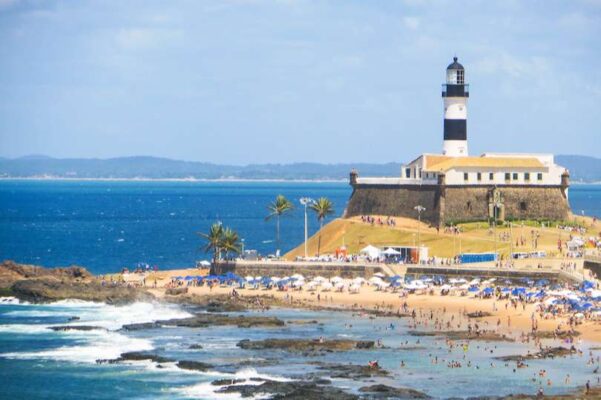
Located in the northeast region of Brazil lies Salvador, the vibrant capital of Bahia, offering an array of breathtaking beaches that are among the finest in the country.
Praia Itapua is a pristine stretch of white sandy beach, adorned with palm fronds and coconut trees, creating a picturesque paradise. It is located near the culturally rich and artistically vibrant neighborhood of Itapua. Nearby venues exude an eclectic and bohemian atmosphere, featuring lively live music and delectable food options, such as “acaraje,” a spicy fried bean dish.
For a local experience, join the residents at Boa Viagem, a beachfront area bordered by beachside bars, nightclubs, seafood restaurants, and a scenic boardwalk perfect for leisurely strolls along the shore. Boa Viagem benefits from coral reefs that protect its shallow waters, making it an ideal destination for families looking to enjoy a day at the beach.
Bonito
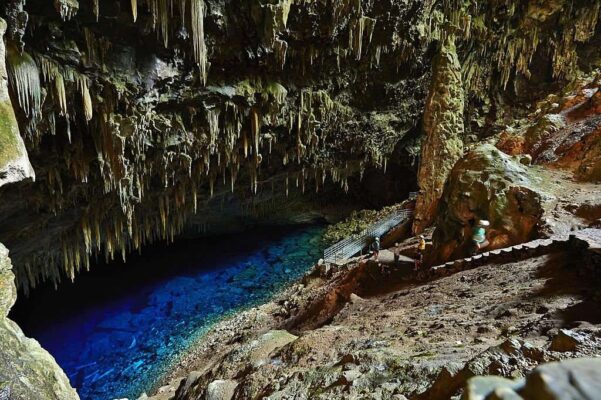
Nestled in the Bodoquena Sierra of Mato Grosso do Sul, Bonito is a charming town and a thriving hub for ecotourism.
Bonito is enveloped by pristine waterways and lush forests. One of its premier attractions is the Rio de Prata, or Silver River, known for its crystal-clear aquamarine waters teeming with friendly fish, making it an ideal spot for snorkeling.
Another captivating destination is the Gruta do Lago Azul, or Blue Lake Grotto, an otherworldly underwater cave filled with mesmerizing blue water. Scuba diving, swimming, and snorkeling are popular activities in this grotto, where lucky explorers may even stumble upon fossils of ancient prehistoric creatures.
Within Bonito, you’ll find the Aquario de Natural, a marine preserve just a short trek through the jungle. Here, swimming, snorkeling, and glass-bottomed boat tours are favored activities, offering a memorable adventure through the clear waters inhabited by lazily swimming, vibrantly colored fish.
Fernando de Noronha
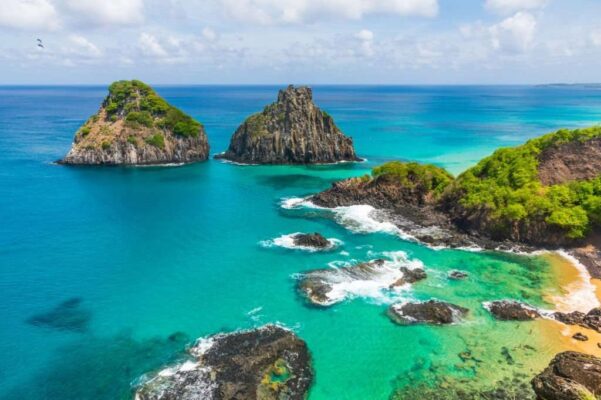
Fernando de Noronha, located 354 km (220 miles) off the northeastern coast of Brazil, is a stunning archipelago known for its breathtaking beaches, picturesque landscapes, and diverse wildlife. In 1503, Amerigo Vespucci embarked on a remarkable journey and stumbled upon a captivating archipelago. Over time, the Dutch and French adventurers also ventured to this enchanting destination, leaving their temporary mark. However, it was Portugal who ultimately claimed dominion over this alluring archipelago in 1737.
Today, travelers can explore the largest of the 21 islands, which is home to a population of approximately 3,500 people. The travel destination is a paradise for adventure seekers, attracting divers and snorkelers from all over the world. With its consistently warm waters and excellent visibility, even at depths of 50 meters, it offers an unforgettable experience.
Rio Carnival
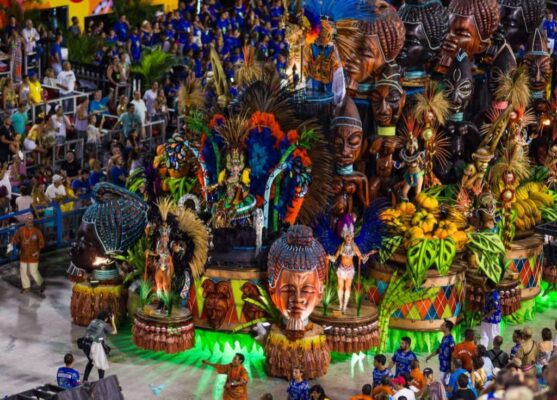
Brazil is a vibrant destination with carnival celebrations happening in various parts of the country. Among the most famous locations are Recife, Olinda, and Salvador, where you can experience the lively festivities. However, when it comes to travel, one of the most renowned and celebrated events is the Carnival in Rio de Janeiro. The Rio Carnival is a popular travel destination, drawing in two million people per day on the streets and nearly half a million international visitors during its four-day celebration.
The vibrant Carnival takes place in various locations throughout Rio, from the lively streets and squares to the bustling bars, clubs, and other venues. The festivities culminate in the breathtaking Rio Samba Parade at the iconic Sambadrome.
Ouro Preto
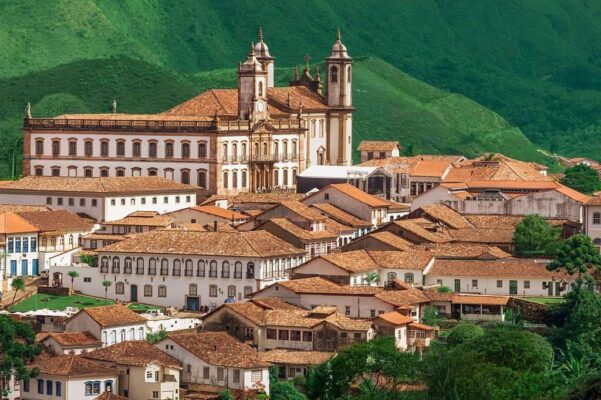
Ouro Preto, located in the Serra do Espinhaco mountains north of Rio de Janeiro, is a historic colonial town characterized by its baroque architecture and cobblestone streets.
Founded at the close of the 17th century, the town played a pivotal role in Brazil’s Gold Rush of the late 17th century, rapidly becoming one of the wealthiest and largest settlements in the region. It was also the hometown of Brazil’s most celebrated artist and sculptor, Aleijadinho. Visitors can admire many of Aleijadinho’s masterpieces scattered throughout the city, along with a collection of his sculptures displayed in the Museum of Aleijadinho.
Just outside Ouro Preto lies the world’s largest gold mine open to the public, located in Mariana. Guided tours allow visitors to explore the gold mine via an old cable car while delving into its rich history. Within the town of Ouro Preto, numerous elaborately designed churches showcase intricate architectural details. Many of these churches were adorned with native gold, adding to their splendor.
Teatro Amazonas
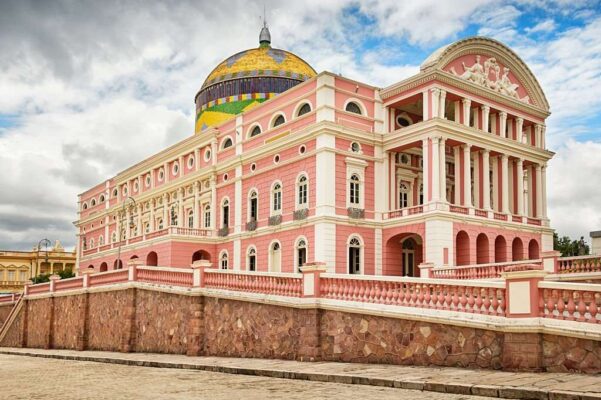
Teatro Amazonas, also known as Amazon Theatre, is an opera house situated in the heart of the Amazon Rainforest, in Manaus.
Constructed during the prosperous era of the rubber trade, the opera house utilized materials sourced from around the world, including furniture from Paris, marble from Italy, and steel from England. The exterior of the building is adorned with a dome covered in 36,000 intricately decorated ceramic tiles, painted in the colors of the Brazilian national flag.
On January 7, 1897, the opera house hosted its inaugural performance featuring the Italian opera “La Gioconda.” However, due to the decline of the rubber trade, Manaus lost its primary source of income, leading to the closure of Teatro Amazonas shortly after its grand opening. For nearly 90 years, the opera house remained dormant until it reopened its doors in 1990.
Amazon River
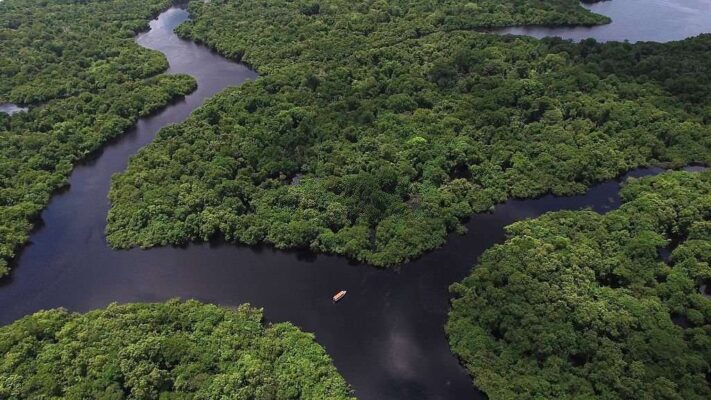
The Amazon River, renowned as the world’s largest river by water volume, meanders through nine South American countries, including Brazil, Ecuador, Peru, and Venezuela.
As the lifeblood of the largest rainforest on the planet, this formidable river remains largely uncharted, concealing countless discoveries and opportunities. In the northwestern region of Brazil lies Manaus, the sole city within the Amazon Rainforest boasting a population exceeding one million residents.
People from around the globe journey to Manaus in search of the chance to explore this unique environment, whether embarking on a one-of-a-kind Amazon River tour or embarking on a backpacking adventure through the lush Amazonian jungles. These experiences offer a rare opportunity to encounter sloths, toucans, macaws, and the captivating, pinkish-colored river dolphin known as the boto.
Chapada dos Veadeiros National Park
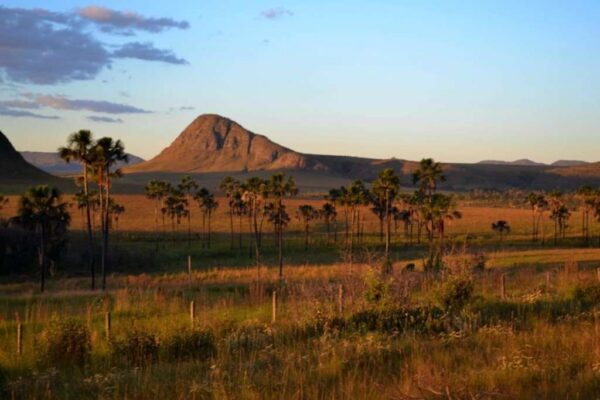
Chapada dos Veadeiros National Park offers easy access from Sao Jorge and Alto Paraiso. This magnificent park is perched on an ancient plateau that dates back an astonishing two billion years.
As you explore the national park, you will encounter breathtaking cascading waterfalls, picturesque dipping valleys, and awe-inspiring steep canyons. Traveling to the various hiking trails offers a fulfilling adventure. For instance, when exploring the Cachoeira Macaquinhos, also known as the Little Monkey Waterfall, travelers can embark on a scenic trail spanning less than three miles. It is a travel destination that caters to beginners, providing breathtaking views of emerald-dipped pools filled by cascading waterfalls.
Explore the stunning Vale da Lua located within the breathtaking Chapada dos Veadeiros National Park. One of the park’s most popular attractions is this remarkable rock formation, which was formed over thousands of years through the process of erosion. Next, capture breathtaking photographs at the renowned Mirante de Janela, a landmark that resembles a window frame, offering stunning panoramic vistas of Chapada dos Veadeiros National Park.
Historic Center of Olinda
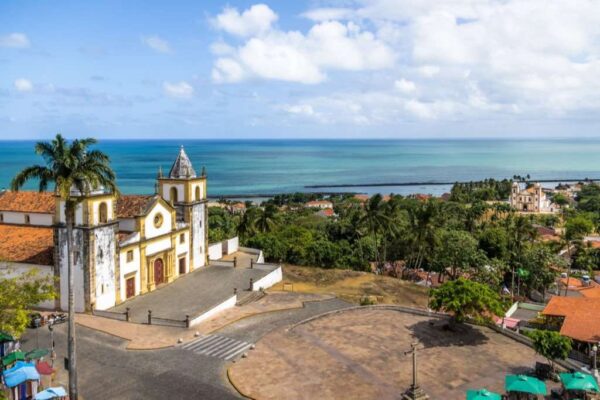
Located on the enchanting northeastern coast of Brazil in Pernambuco, lies the captivating city of Olinda. Just a short distance north of the vibrant city of Recife, Olinda is a destination steeped in rich history and cultural significance. This travel destination was established during the 16th century and is renowned as one of Brazil’s most well-preserved colonial cities.
The vibrant streets of Olinda’s Historic Center are filled with magnificent architectural wonders, embraced by lush greenery, and complemented by picturesque coastal views. The city’s rich travel history is intertwined with the sugarcane industry, as evidenced by its historic center. This area showcases the prosperity and economic growth that flourished in the 16th century. Located in the charming city of Olinda, the Catedral Alto da Se stands as a remarkable testament to the rich architectural heritage and vibrant history of this destination. Once a revered Jesuit church, it showcases the captivating allure that Olinda has to offer to travelers seeking a glimpse into its prosperous past.
Exploring the Historic Center of Olinda takes you on a captivating voyage through the rich history of Brazil. Immerse yourself in the enchanting atmosphere as you encounter ancient monuments, magnificent churches, and centuries-old houses.
Jericoacoara
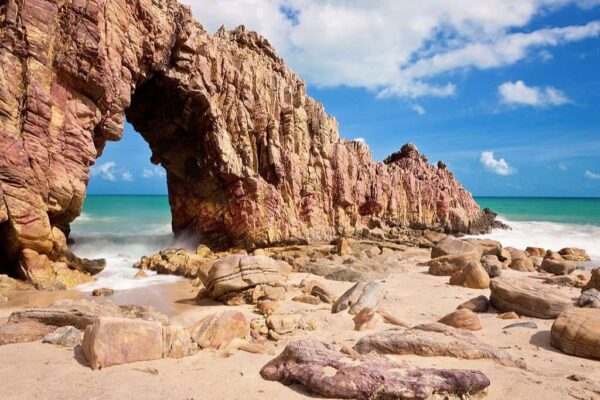
Jericoacoara, also known as Jijoca or Jeri, has evolved from a quaint fishing village into a bustling beach resort, earning its place as one of those idyllic vacation spots that often tempt travelers to extend their stay.
Located west of Fortaleza in Ceara, Jericoacoara is a favored destination for activities such as windsurfing, kitesurfing, surfing, swimming, and backpacking. Here, the streets are made of sand rather than concrete, and the undeveloped coastline stretches as far as the eye can see, adorned with sprawling sand dunes.
Explore Jericoacoara National Park, home to the mesmerizing Lagoa do Paraiso, a turquoise lagoon complete with nearby hammocks for leisurely relaxation and bars offering refreshments. Savor fresh lobster, oysters, and an array of seafood dishes at local restaurants. When nightfall descends upon Jericoacoara, join both locals and fellow tourists at the numerous clubs and bars where live music serenades the night away.
Ilha Grande
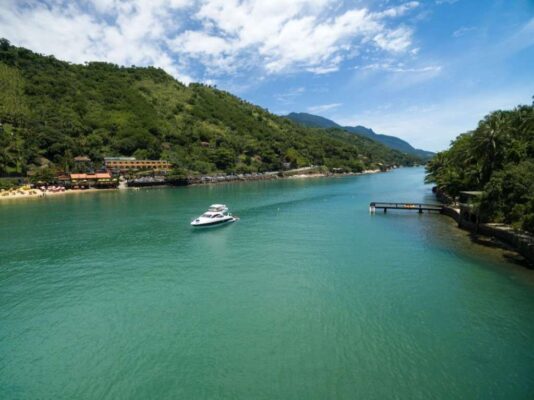
Located between Sao Paulo and Rio de Janeiro, Ilha Grande is a stunning and popular weekend getaway destination.
With lush forest trails for hiking, crystal-clear waters for swimming, and powdery white beaches for relaxation, it’s easy to lose track of time while vacationing on Ilha Grande.
Once serving as a state prison, a leper colony, and even a refuge for pirates, the island has transformed into an ideal vacation spot for both locals and tourists seeking a serene outdoor escape.
Embark on a hike to Lopes Mendes Beach, consistently ranked among Brazil’s top beaches, boasting an endless shoreline, tranquil ambiance, and crystal-clear waters that invite you to unwind. Ilha Grande offers a variety of hiking options for adventurous souls, whether you choose to explore the vicinity of Vila de Abraao, passing by the historic prison that once housed political prisoners, or embark on a challenging journey to the island’s highest point, Pico de Papagayo.
Pelourinho
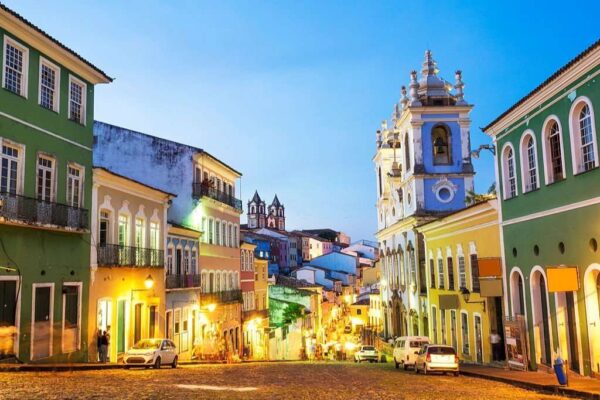
Pelourinho, a historic neighborhood in western Salvador, Bahia, once served as the city’s colonial center and operated as a slave market until the abolition of slavery in 1835.
Today, Pelourinho thrives as a vibrant hub brimming with culture, history, and opportunities to delve into colonial architecture.
This neighborhood boasts numerous noteworthy tourist attractions. Begin your exploration with a visit to Igreja de São Francisco, an early 18th-century church built in the High Baroque style. Its interior is adorned with intricate gilded artwork that inspires awe, complemented by gold-covered ceilings.
Next, be captivated by a live capoeira performance. Capoeira is an Afro-Brazilian martial art that intertwines music, acrobatics, dance, and spirituality, accompanied by traditional Brazilian songs and instruments. Witnessing the dazzling displays of spins and kicks offers a mesmerizing glimpse into Afro-Brazilian history.
These are just a few of the popular activities and attractions that await those eager to explore the rich culture and history of Pelourinho!
FAQs
Q: Is it safe to visit Brazil as a tourist?
A: Brazil is generally safe for tourists, but like any destination, it’s important to take precautions, especially in crowded areas.
Q: hat’s the best time to visit the Amazon rainforest?
A: The dry season (June to December) is ideal for Amazon tours when wildlife is more accessible.
Q: How can I experience Carnival in Brazil?
A: To enjoy Brazil’s famous Carnival, plan your visit during the festival season in February or March.
Q: Are there any visa requirements for traveling to Brazil?
A: Check the visa requirements for your country on the Brazilian consulate website before your trip.
Q: Can I explore Brazil on a budget?
A: Yes, Brazil offers budget-friendly options for accommodations, dining, and transportation, especially in smaller cities.


